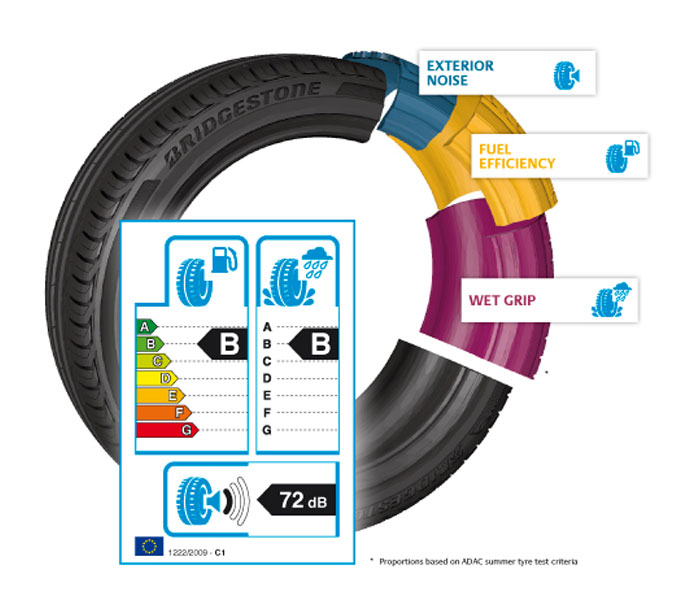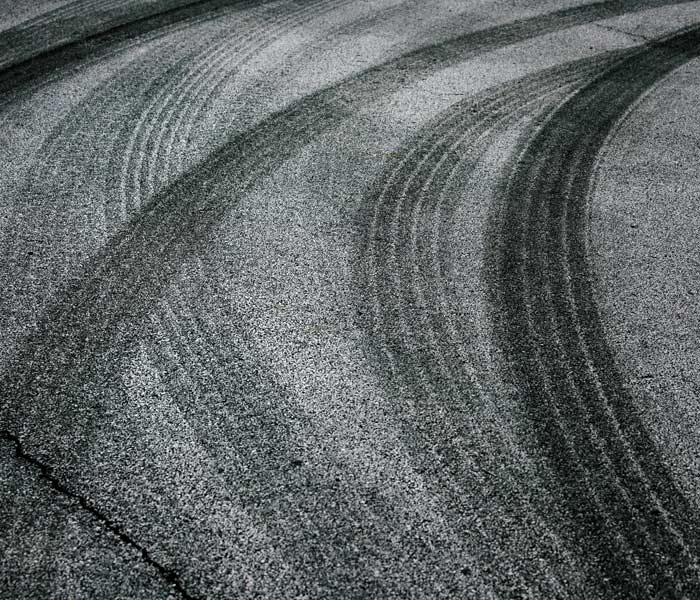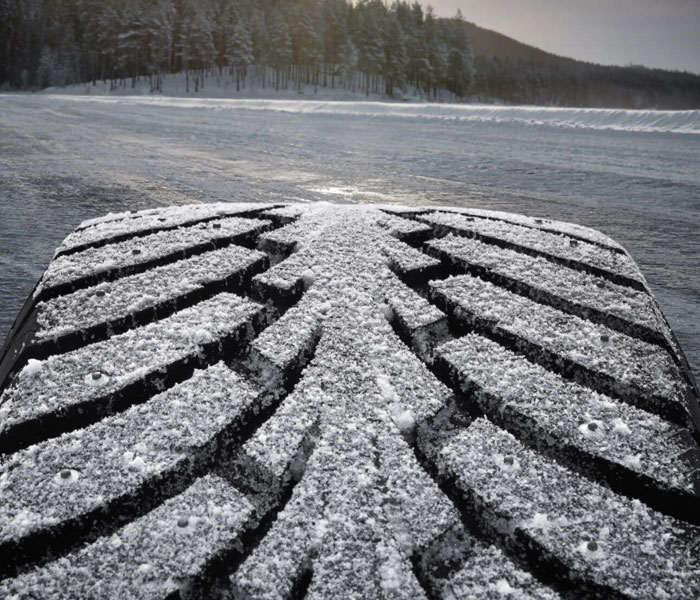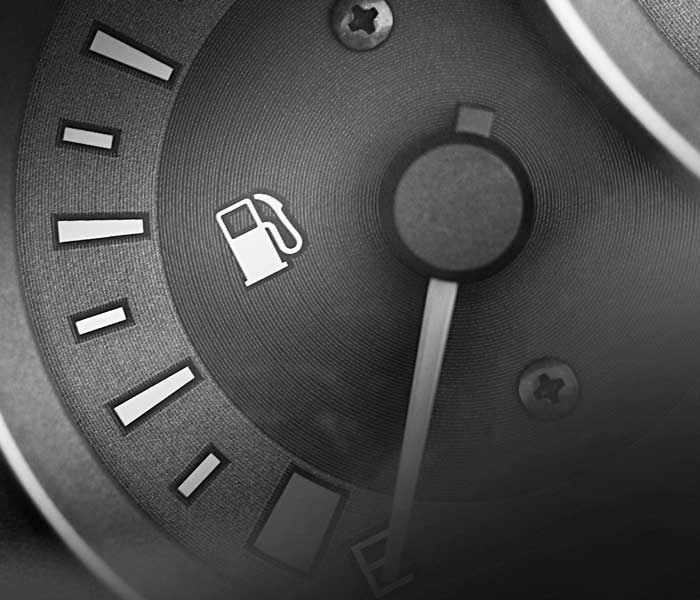TYRE LABELLING
As of 1 November 2012, all passenger tyres sold in the European Union must be labelled with an official EU tyre label. This label contains information about three important criteria that form the basis for evaluating tyre performance: wet grip, fuel efficiency and exterior noise.
The European Tyre Label is a good indicator of basic tyre performance. However, it is far from the end of the story. Your safety and comfort demand the best performance from your tyres in all conditions and for their entire lifespan.
Which is why Bridgestone pays meticulous attention to many parameters not covered by the new label when designing, developing, testing and constructing its tyres: wet-weather handling, dry braking performance, high-speed stability, resistance to aquaplaning, wear resistance, comfort and interior noise.
In the case of winter tyres, Bridgestone also develops advanced compound and tread technologies to ensure handling characteristics, braking, acceleration and steering response at low temperatures and on snow and ice.
Together, all these criteria tell the real story behind premium tyres, and guide you in buying the suitable tyre for your driving requirements.
 From A (most efficient) to G (least efficient) Rolling resistance is one factor of your tyres that can affect your fuel consumption. The lower the rolling resistance, the less fuel is required to move your vehicle forward and the less carbon emissions are generated. The difference in fuel consumption between A and G-rated tyres could be as much as 7.5%*. For an average passenger vehicle, that is around 0.65L per 100km.
From A (most efficient) to G (least efficient) Rolling resistance is one factor of your tyres that can affect your fuel consumption. The lower the rolling resistance, the less fuel is required to move your vehicle forward and the less carbon emissions are generated. The difference in fuel consumption between A and G-rated tyres could be as much as 7.5%*. For an average passenger vehicle, that is around 0.65L per 100km.


 From A (best) to G (worst) Braking response is one important element of your tyre’s performance in the wet and is essential for your safety. The difference in braking distance between A and G-rated tyres could be as much as 30%*. For a passenger car travelling at 80kph, for example, that can mean up to 18m in the case of full braking in wet-weather conditions.
From A (best) to G (worst) Braking response is one important element of your tyre’s performance in the wet and is essential for your safety. The difference in braking distance between A and G-rated tyres could be as much as 30%*. For a passenger car travelling at 80kph, for example, that can mean up to 18m in the case of full braking in wet-weather conditions. 3 ratings from 1 (quietest) to 3 (least quiet) Exterior tyre noise is measured in decibels (dB) and compared with the new European tyre exterior noise levels to be introduced in 2016.
3 ratings from 1 (quietest) to 3 (least quiet) Exterior tyre noise is measured in decibels (dB) and compared with the new European tyre exterior noise levels to be introduced in 2016.


